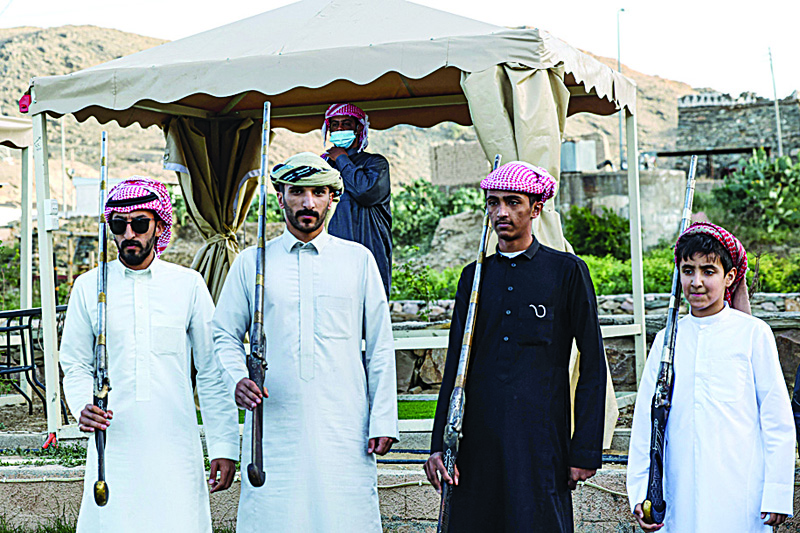 This combination of pictures shows Saudi folklore dancers performing the art of "Taasheer", a traditional dance of the people of Taif, 750 kilometers west of Saudi Arabia's capital Riyadh. - AFP photos
This combination of pictures shows Saudi folklore dancers performing the art of "Taasheer", a traditional dance of the people of Taif, 750 kilometers west of Saudi Arabia's capital Riyadh. - AFP photos
In Saudi Arabia's west, classic muzzle-loading rifles are carefully prepared for the traditional "Taasheer" war dance, a striking display of leaping and gunpowder blasts. Men and boys take weapons laid out in the bed of a truck and fill the barrels with gunpowder before, one by one, they take center stage to showcase their skills in what is also known as the fire dance.
Dozens of onlookers, including women and children, stand on the sidelines of a grassy clearing lined with gazebo tents. In a collision of the ancient and the modern, some hold up mobile phones to film the spectacle. Barefoot and in their traditional thobe and ghutra headdress, the performers dance to traditional music against the backdrop of mountains in the western province of Taif.
They bounce up and down with their knees pressed close together, as they wave the gun and finally reach for the sky and fire at the ground, resulting in a blast of sparks and smoke under their feet. A tribal tradition believed to date back hundreds of years, the dance is now performed at weddings, festivals and on other special occasions. In a rapidly modernizing kingdom, which is undergoing dramatic economic and social reforms spearheaded by the de facto ruler, Crown Prince Mohammed bin Salman, Saudis are seeking to maintain some long-held traditions.
 A picture shows Saudi folklore dancers performing the art of "Taasheer".
A picture shows Saudi folklore dancers performing the art of "Taasheer".
"Taasheer dance is the popular heritage of the people of Taif. It is considered an essential event at all occasions," Salman Al-Tuweirgi, owner of a coffee shop in Taif, told AFP. He said that the dance, originally performed before battle to motivate fighters and intimidate opponents, has been passed down from generation to generation. "It is an ancient war dance, and we are preserving it in this way," said Tuweiri. "Thank God, we still continue this tradition so it will last forever."
Young boys also take part in the dance, training at first with an unloaded weapon until they are able to handle the gun. "We increase the level of training as they become more capable of performing the dance," said Tuweiri. "It is a popular legacy... and we are teaching our children how to do it so that they too in the future will train their children." - AFP

